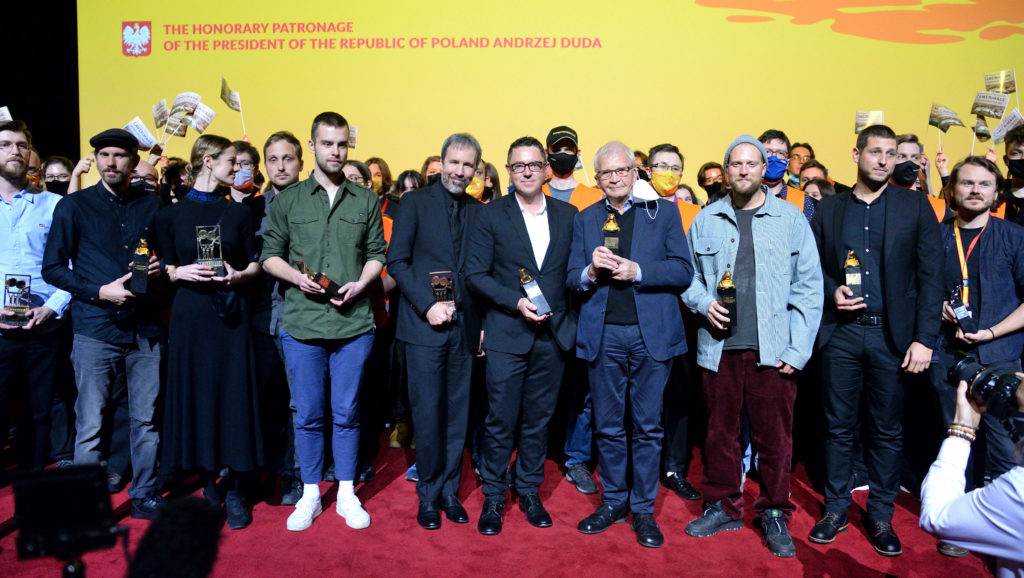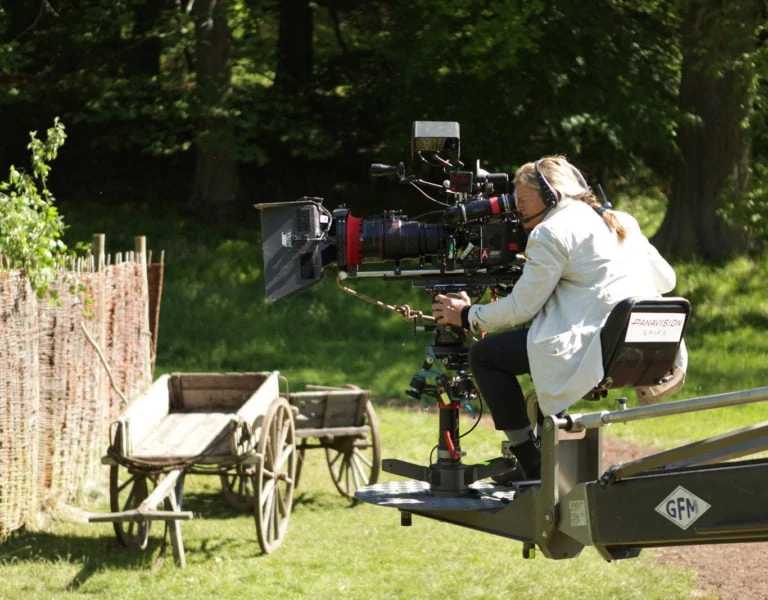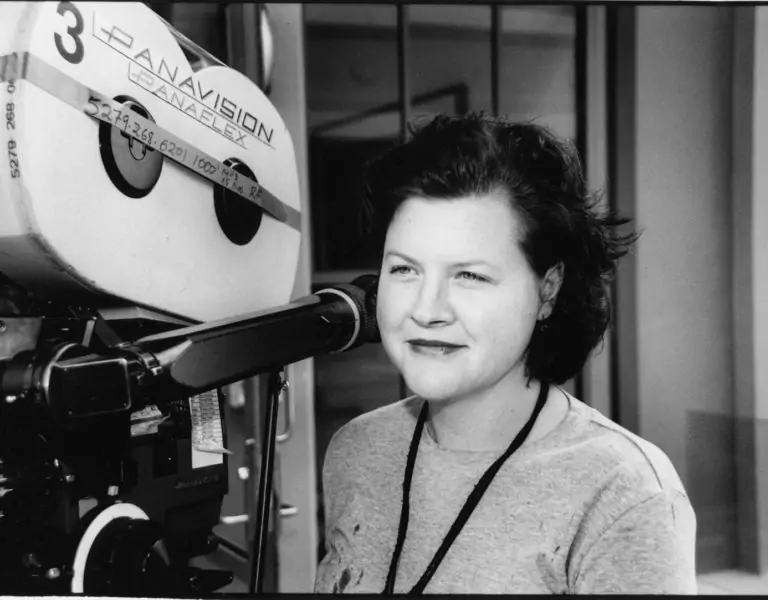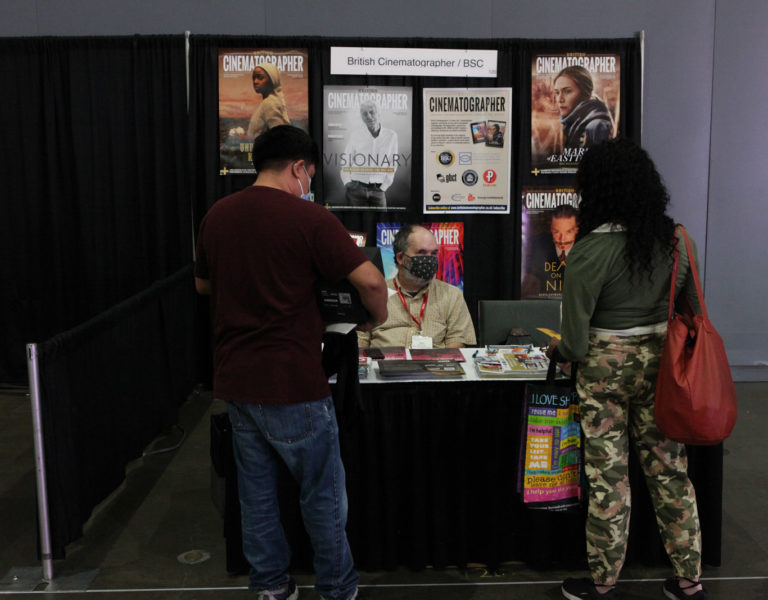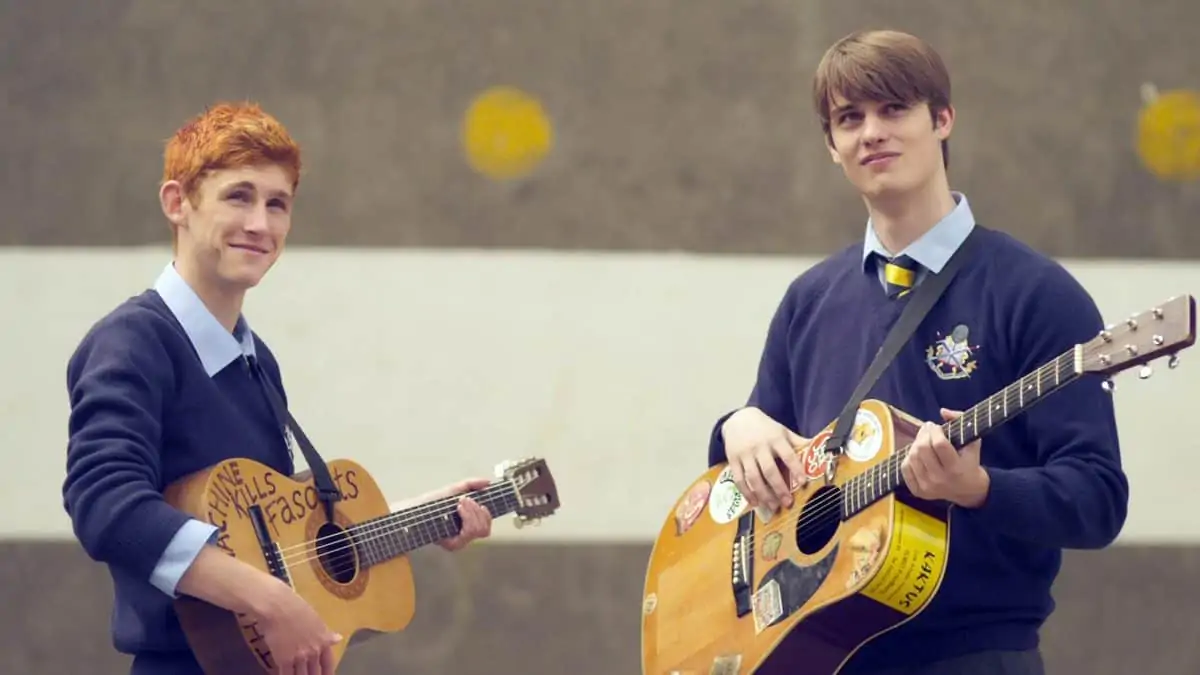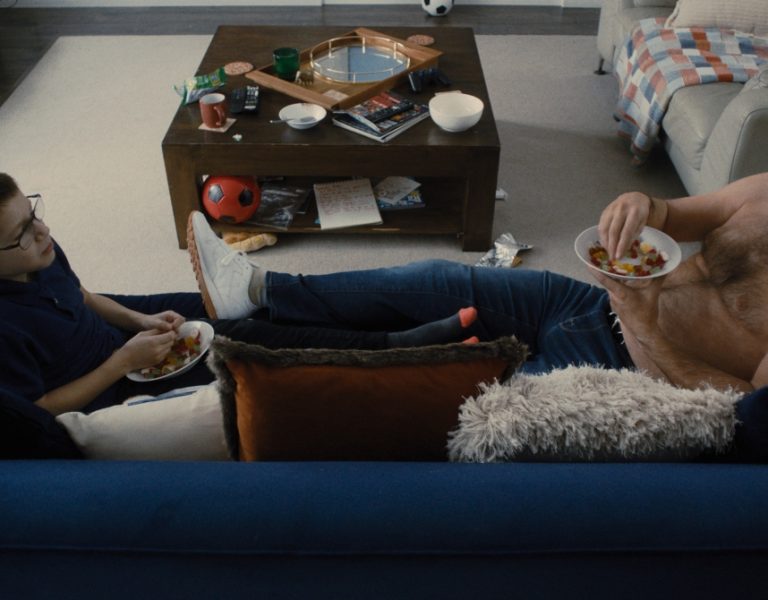THE SPIRIT OF FILMMAKING
Having been forced to move online in 2020 due to the pandemic, this year’s EnergaCamerimage International Film Festival returned as an in-person event in Toruń, with a virtual platform allowing those participating online to watch streamed events. The festival featured 231 films in ten juried, competitive categories and attendees could participate in 82 Q&A sessions with filmmakers including Joel Coen and Bruno Delbonnel ASC AFC; Denis Villeneuve and Greig Fraser ASC ACS; Linus Sandgren ASC FSF and Cary Joji Fukunaga; Markus Förderer ASC BVK; and Alice Brooks ASC, to name but a few. In addition, the event offered special screenings, retrospectives, and exhibitions.
The British Cinematographer team enjoyed a wonderful whirlwind of a week at the festival, joining the industry in celebrating the finest filmmaking talent, creations, and innovations. While the virtual element is a valuable addition – and something we will likely see more of as the pandemic has driven the development of hybrid events – nothing beats attending an event such as Camerimage in person.
It was a joy to see so many of you at the festival and to catch up at our stand and at events throughout the week. The enthusiasm for connecting once again and being immersed in the big screen experience was clear to see. From the heartwarming biopic King Richard, action-packed adventure Red Notice, and the impressive creativity on display in the Music Videos Competition through to stunning monochrome creations including The Tragedy of Macbeth, Belfast, and C’mon C’mon, viewing an eclectic mix of productions in such great company was an experience that had been missed by many.
We were proud to present our bumper November issue at the event, complete with a cover story special on Dune tying in with the festival’s screening of the sci-fi epic and director Denis Villeneuve’s award for Outstanding Director. The film went on to scoop the Bronze Frog in the Main Competition. We hope those of you who attended the festival grabbed a copy of the issue and the accompanying event guide.
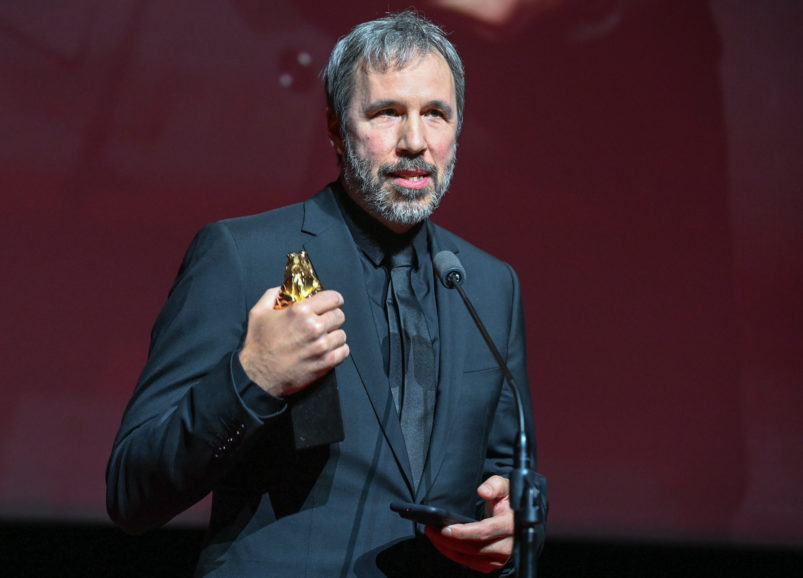
Showcasing innovation
Demonstrations of new equipment drew crowds throughout the event. Experts staffing vendor booths in the exhibition hall observed both increased traffic and reduced stress. Catherine Crawley at Cooke Optics noted that smaller crowds gave people more opportunity to speak individually about their shooting and lighting needs. The company was presenting exciting additions to its expanding range of Full Frame lenses – two new Varotal/i FF zoom lenses and the extensive Panchro/i Classic FF range.
Another significant innovation-focused announcement came in the form of the much-anticipated global launch of Sony’s latest addition to its high-end digital cinema camera line-up – the Venice 2 – which builds upon the strength of the original Venice with new features including a compact design, internal recording, and the option for two different sensors. The introduction of the flagship model in the main hall of CKK Jordanki included a rundown of its features and a panel discussion with cinematographers Rob Hardy BSC, Robert McLachlan ASC CSC, and underwater DP/operator Braden Haggerty along with examples of footage they have captured.
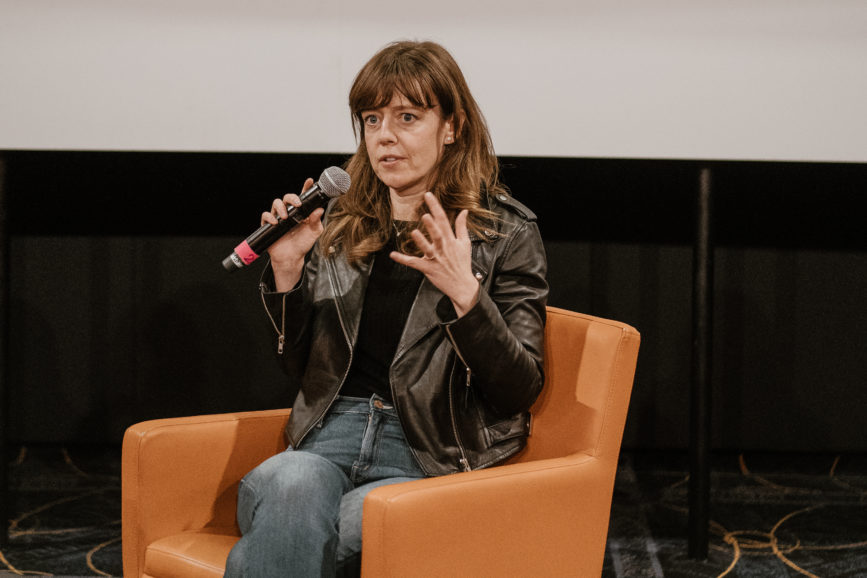
Sony also hosted seminars on shooting with Venice including sessions in which Xavier Dolleans AFC shared his experiences of lensing historical drama Germinal and McLachlan discussed how he captured a 1950s period look with the camera.
ARRI’s Big Screen Experience session on the possibilities of mixed reality shooting at Camerimage attracted a large crowd to the main hall in CKK Jordanki. Cinematographer Nikolaus Summerer took attendees behind the scenes of upcoming Netflix series 1899 – which takes place on board a ship – and highlighted the benefits of using mixed reality shooting techniques. DP Robert Payton and ARRI’s Stephan Schenk also shared their expertise in combining physical and virtual worlds in-camera.
“It puts the creativity and control of the final image back into the cinematographer’s hands. If you work in a green screen environment, sometimes you have no idea what the background will look like and it is decided by someone in VFX,” Summerer said. “I believe one of the most important aspects of cinematography is creating a relationship between two people or a person and an environment with the framing. [In a virtual studio] I can say exactly where I want a person to be in relation to a tree or a church and make sense of it for my story.”
Technology and technique were at the centre of a discussion hosted by Rosco. Featuring a stellar line-up of Alice Brooks ASC, Robert Yeoman ASC, Leo Hintsin AFC, and London-based gaffer Jonny Franklin, the panel discussed how LED lighting choices can lead to a more efficient production workflow. “On Phantom Thread we used LED a lot, partly due to the restricted location as there was not enough space to use an HMI or a tungsten light to break down and to be soft enough to come through the window, so having big soft sources of LED helped us out. The speed you can work with LED has changed our world and the control you have over dimming and colour,” said Franklin, who embraced LED technology early on.
Also exploring the realm of illumination, the Light!Talks sessions at CSW Toruń included discussions with masters of their craft such as Martin Ruhe ASC, Jamie Ramsay SASC, John Matysiak, Jessica Young, and Checco Varese ASC. When discussing skin tones and the incorrect assumption that more light is needed when lighting darker skin tones, Varese told The Light Bridge’s Jakob Ballinger: “This is a misconception, you actually need the same amount of light. It’s about make-up and reflections… It’s a matter of technique.”
An educational experience
For many guests, the heart of Camerimage is its seminars, ranging from discussions on large-format cameras and shooting at night to intensely personal classes on developing relationships between cinematographers and camera operators. This year’s standout educational offering included Vittorio Storaro ASC AIC’s packed masterclass exploring the films of director and Storaro’s key collaborator, Bernardo Bertolucci and the process of writing with images and light, and an IMAGO seminar on the blend of science, technology, and art in the collaboration between cinematographers and colourists.
“I think the most important thing is the pipeline. You are working with different devices which then means you need people who are specialists in each area,” said Peter Doyle, colourist and FilmLight Colour Award jury member. “When I approach a film, one question is how is the DP thinking about the light or the cameras? The second important question is what is the primary release of the film and how will it be released – theatrical film, film print or DCP? That then becomes your world and parameters which you can fit your creative vision into…And trying to adopt a holistic approach to grading can avoid a lot of surprises.”
Lawrence Sher ASC presided over a perennial Camerimage favourite, the ASC Legacy Panel. This year’s panel was devoted to work by cinematographers Michael Chapman ASC and Allen Daviau ASC, who both passed away in 2020.
Sher introduced clips from Taxi Driver, Raging Bull, ET – The Extraterrestrial, Bugsy, and Empire of the Sun. Joined by Seamus McGarvey ASC BSC, Amy Vincent ASC, Xavier Grobet ASC AMC, and Martin Ruhe ASC, Sher broke down individual scenes, marveling over Chapman’s uncorrected colours and Daviau’s atmosphere. Vincent joked about becoming one of Daviau’s many unofficial chauffeurs. (Although he lived in Los Angeles, he never learned to drive nor owned a car.) McGarvey confessed to stealing a shot in Bugsy for Atonement, while Sher promised that he would be stealing shots shown in the panel session in his next feature.
“I wanted to understand how to interpret exposure in the digital world the way I used exposure when shooting film to create a look or feeling in the image,” Ed Lachman ASC said at a heavily attended seminar during which he and Marko Massinger of ViacomCBS introduced the EL Zone Mapping and Metering System – a patented process derived in part from the zone system widely used in still photography.
Cinematographers use a variety of approaches to light scenes: exposure meters, waveforms, histograms, their eye, their emotions. The problem was how to find a standard of interpretation that would create an understanding of the results regardless of camera or sensor. “The problem for me has always been that IRE and false colour are not consistent from one camera manufacturer to another,” Massinger explained. “They also don’t track exposure accurately in different ISO or stops because the digital medium is referencing a linear scale based on electronic voltage values, not a logarithmic system. This new system will work the same on a GoPro or an Alexa 65.”
Elsewhere in the Camerimage schedule, a fascinating discussion about how production designers and cinematographers join forces to create worlds on screen featured Ari Wegner ACS, production designer Nelson Coates, production designers and co-founders of The Production Designers Collective Kalina Ivanov, and Inbal Weinberg. “I work very closely with the cinematographer… I naturally think like a camera because I started out as a storyboard artist, so my brain is always designing for shots,” said Ivanov. “I never design a set because it looks cool. It’s more important that it serves the story and how we agree to shoot it.”
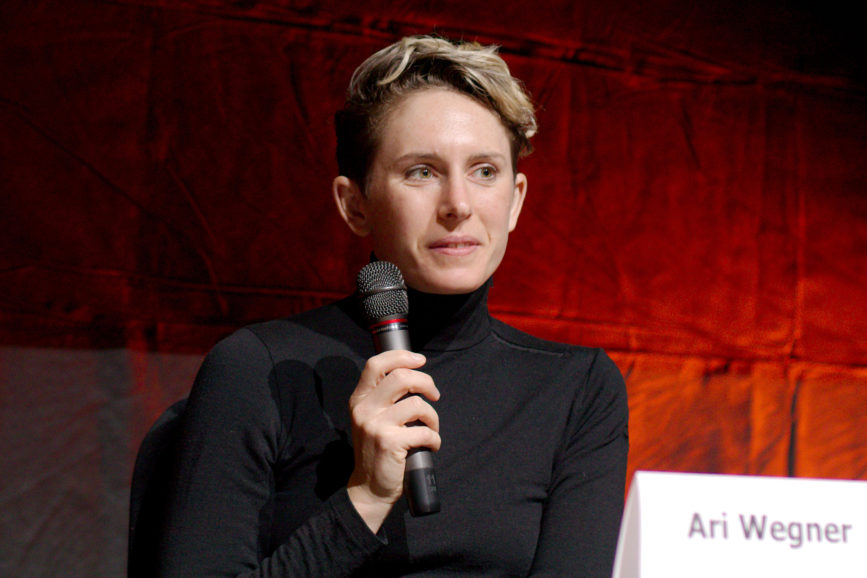
One elated audience member referred to Philippe Rousselot ASC AFC and Anastas N. Michos’ seminar as “the best event of the festival”. The filmmakers discussed the relationship between operators and DPs based on their seven collaborations. “What I look for in an operator is a clone of myself, an idealised clone of myself, and somebody who will be able to do exactly what I want but better, even if I don’t admit that anyone will do better,” said Rousselot. For Michos, the role of an operator is based on “a virtuosity of instrument. A camera operator holds an instrument in their hand and it’s about what your technical skill is as well as your collaborative skill that you bring to the table.”
Creating change
On the day after the opening ceremony, Camerimage and the American Society of Cinematographers held a joint memorial for Halyna Hutchins, the cinematographer who lost her life on the Rust set in New Mexico. It was a sober, emotional gathering in the main hall of CCC Jordanki. Kazik Suwala, Director of the European Film Center, opened the program. In a video link, ASC President Stephen Lighthill, Hutchins’ mentor while she attended school at the AFI, awarded her an honorary ASC membership in perpetuity. ASC First Vice President Amy Vincent introduced cinematographer Alice Brooks ASC, who spoke tearfully of her friendship with Hutchins.
Seamus McGarvey BSC ASC called for solidarity among cinematographers in making a difference for the future. Other cinematographers attending included Lawrence Sher ASC, 2020 Lifetime Achievement Award winner Philippe Rousselot ASC AFC, and Xavier Grobet ASC AMC. The memorial ended with a screening of Hutchins’ student film Hidden, which she brought to Camerimage in 2016.
IMAGO, the International Federation of Cinematographers, sponsored two seminars during the festival. Wednesday’s presentation “Together” explained the programs and committees the federation sponsors. Friday’s Diversity and Inclusion panel was a joint presentation with the ASC Vision Committee, the British Society of Cinematographers, Illuminatrix, the Australian Cinematographers Society, the American Film Institute, and IMAGO. The panel has been a highlight of Camerimage since it began in 2016. Over the years it has gained a reputation for lively debates.
The moderators included Cynthia Pusheck ASC, co-chair of the ASC Vision Committee and Kate Rolfe from the Digital Orchard Foundation. Elen Lotman ESC began by explaining the background of the seminar, adding that the goal for the evening was to offer practical advice and information.
Pusheck brought up one of the commonly used false arguments against inclusion: You can’t get a job interview unless you are a woman or person of colour. “That’s why we need the data,” she countered. “That’s why we need to look at the numbers.”
Justine Kerrigan, chair of the ACS Diversity, Reconciliation, and Inclusion Committee, provided just that with statistics from a study on camera crews that will be published next year. The study covered feature film and scripted television programs from 2011–2019. While the number of women and people of colour working on crews improved over those years, the demographics remain worse for the industry than society at large.
Hilda Sealy offered her experiences working on a series while pregnant and advocated implementing a job-sharing program which in her case allowed her to work two episodes on, then two episodes off.
Tommy Maddox-Upshaw ASC spoke about the coded language that can prevent people of colour from jobs. He cited two incidents of “possible questionable review” used against people of colour in two weeks. To increase representation, he recommended hiring from the reality that surrounds your life.
ASC president Stephen Lighthill spoke movingly about Halyna Hutchins. “There is an intersection between what happened to Halyna and diversity,” he said. “Obviously Halyna was an extremely talented, determined person. We had great hopes for her success. Any injury, whether it’s to a PA or a rising cinematographer, is horrible, unnecessary.
“I spoke at a candlelight vigil for Halyna held by our camera union, Local 600 of IATE. I raised three issues. One, we should have a community conversation among filmmakers about working conditions. Second, we need to argue that there is no reason for functional weapons to be on set anymore. Finally, please come talk to us if there is something more we should do to prepare young filmmakers for the world.”
Lighthill brought up how cinematographers often feel a sense of loyalty – to the production, to directors they may have spent months with prepping, to their crew – that can pressure them to look the other way when safety violations occur. Lotman called it “passion exploitation,” where you love your work so much that you are willing to accept less than ideal conditions.
“This idea of long hours, lack of self-care,” Pusheck said, “for years we bragged about how that car almost hit us. They were badges of honour.”
“What are we teaching future cinematographers about safety on the set?” asked Sandra Valde-Hansen, a cinematographer and instructor at AFI.
The ever-important topics of safety on set and diversity and inclusion were discussed at numerous events throughout the festival. As IMAGO’s session on the colourist-DP relationship drew to a close, colourist and FilmLight Colour Award nominee Edmond Laccon highlighted that while some of the jury members were women, there were fewer female colourist nominees, and he encouraged more to submit their work next year.
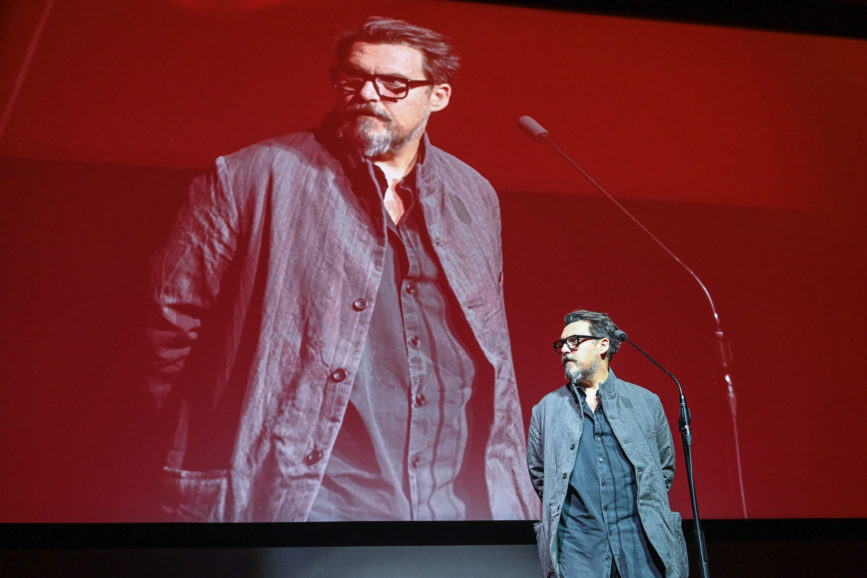
A well-attended seminar hosted by Zeiss on women filming women saw Lucie Baudinaud and Lena Katharina Krause – cinematographers at early stages of their careers – present their work and explore the techniques, creative approaches, and innovations they used when lensing productions with female protagonists.
Members of the jury, IMAGO Co-President Elen Lotman ESC and director Joe Wright, delivered an important statement from the jury at the end of the festival closing ceremony, recognising the need to improve diversity, and expressing a willingness to work with the festival to help achieve this. “We commit to collaborating with Camerimage so the festival can move towards a policy of affirmative action that represents the diversity of cinematographers everywhere,” said Lotman.
Award-worthy talent
Aside from an exceptional line-up of screenings, seminars, masterclasses, and networking gatherings, outstanding talent was recognised at Camerimage. The British Cinematographer team attended the inaugural FilmLight Colour Awards – an excellent addition to the festival which we look forward to seeing evolve.
The ceremony included a panel discussion with several of the winners in attendance and others joining in online. The grading of a theatrical feature award went to Eric Weidt, who worked with Erik Messerschmidt ASC on Mank. The top two entries for the television series/episodic category could not be separated, and so the first trophy was awarded to The Fargo episode “East/West”, graded by Tony D’Amore of Picture Shop, and shot by Dana Gonzales ASC. Placed alongside Fargo was Damien Vandercruyssen’s work at Harbor on the series Lisey’s Story, episode “Lisey’s Story”, shot by Darius Khondji ASC AFC.
Tim Masick at Company 3 scooped the award for best grading in a commercial for the stunning spot for the Dior Spring Summer 2021 Collection, shot by Benoit Delhomme AFC. The award for the most innovative use of Baselight as the grading platform was presented to Gilles Granier, Fabien Napoli and Arnaud Caréo from Le Labo, Paris for their work on the movie Miss.
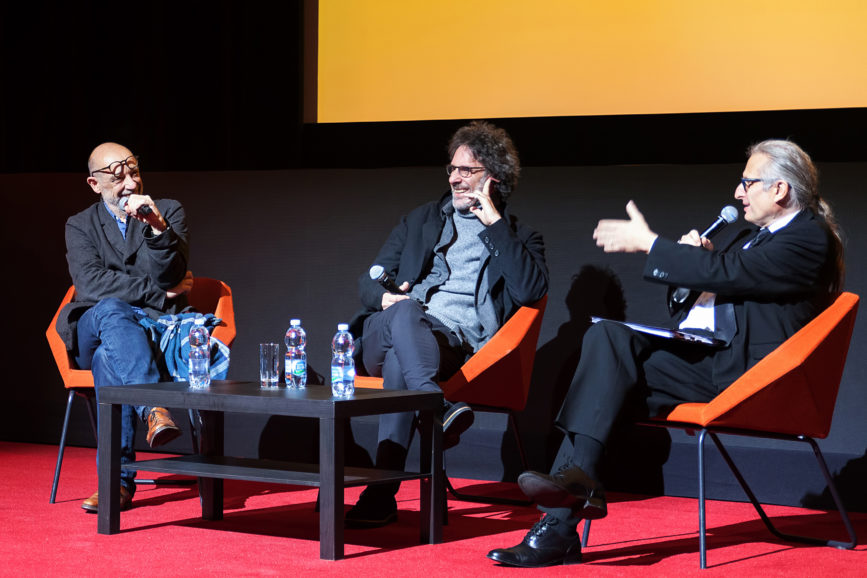
“The role of the colourist is about being the bridge between camera technology and post-production technology and the different platforms we have now to use. Once you’re done filming, your role is to be the final creative outlet for the creatives and DPs but also a person to collaborate with,” said D’Amore. “As the years go by, it’s becoming more important that DPs recognise what technology they have once they are in post-production. That’s the case with Dana on Fargo as he pushes me because he knows the technology on my side and I’m glad to learn more about the camera technology.”
Filmmakers recognised at the closing ceremony included cinematographer extraordinaire Jost Vacano ASC BVK who accepted the Lifetime Achievement Award for his outstanding work, camera inventions and fight for better recognition and fair remuneration of cinematographers everywhere. “I dedicated my life to films and cinematography, and I gave half of my life to become a politician, fighting for the authors’ rights for all of you here,” Vacano said in his acceptance speech, following a standing ovation from the crowd.
Huge congratulations to all the other winners who were crowned victorious on the night and are listed at the end of this event round-up. From the exceptional quality of work on show from the nominees, it must have been an enjoyable challenge for the jury judging each category to select a winner, an experience which Cinematographer Debut Competition jury member Alice Brooks BSC said was the highlight of her week.
The festival’s Closing Gala ended in style with a sneak peek of the European Film Centre which will open in Toruń in 2025 and feature a 600 square metre film studio, a film market demonstrating recent developments in film technology, an educational building, large screening room and a variety of smaller spaces to stage exhibitions. The centre will be home to the festival as well as a location for other events to be held relating to film and cinema.
As Kazik Suwala, Marek Zydowicz, and the Mayor of Toruń Michał Zaleski looked to the festival’s future at the closing gala, they were joined on stage by the Camerimage team and all the volunteers who helped make this year’s in-person event a reality – a remarkable achievement considering the challenges the world has faced.
